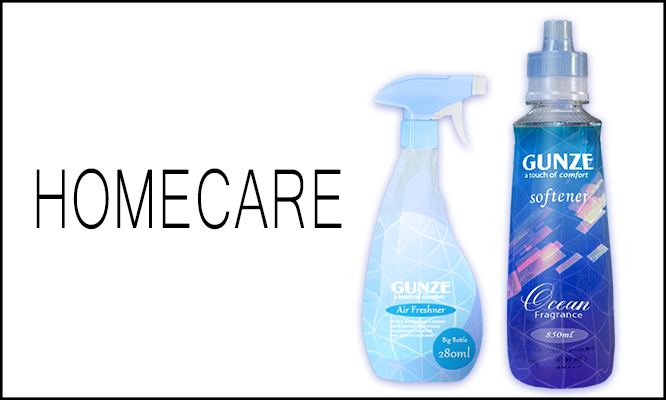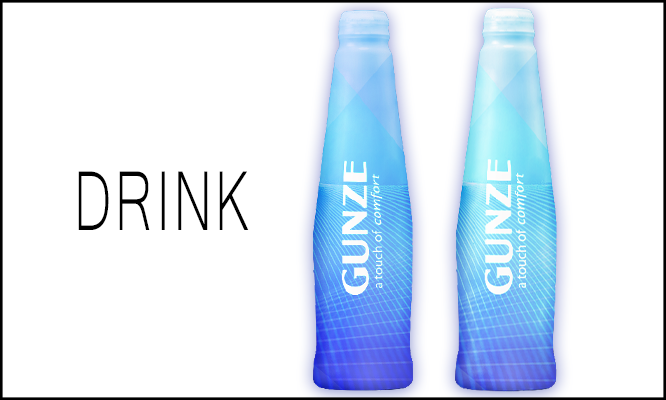

HYBRID SHRINK FILM (Fancywrap HIT)
Hybrid shrink film is a three-layer co-extrusion new technology that combines the advantages of PS and PET. The shrinking material suitable for multi-color printing with high shrinkage. It can make your products more valuable with great shrinkage of shapes and curved bottles.
| Item | PS | Hybrid (HIT) | PET |
|---|---|---|---|
|
Layer composition
(Diagram) |
 |
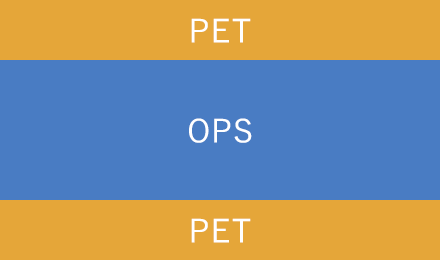 |
 |
|
Features
|
Mostly used for shrink label in Japan
|
Original material of Gunze
|
Used for applications that take advantage of resin characteristics
|
|
Advantage
|
Shrink appearance,
perforation suitability |
Shrink appearance, perforation suitability, heat resistance, content
resistance, stiffness
|
Heat resistance, content resistance, stiffness
|
|
Disadvantage
|
Heat resistance, content resistance, stiffness
|
―
|
Shrink appearance,
perforation suitability |
High shrinkage at low temperatures (For hot air tunnel)
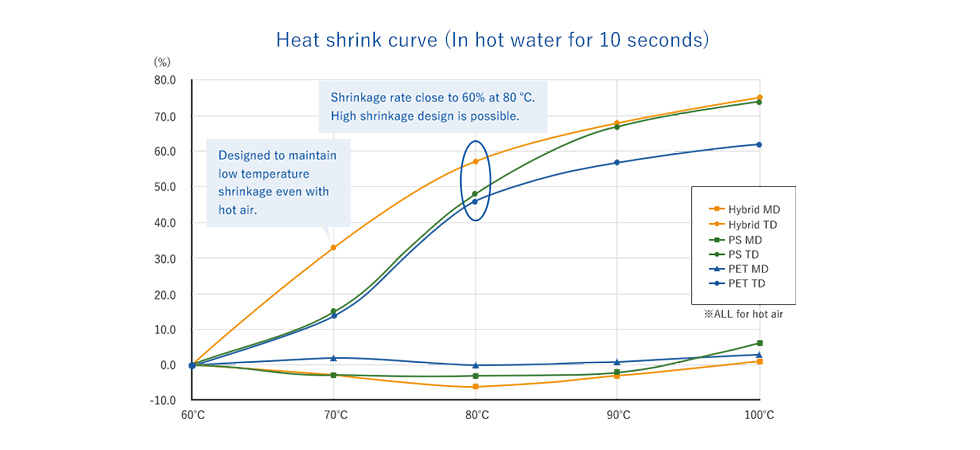
Shrinkable performance comparison between Fancywrap HIT & PVC, PET
Perforation comparison between Fancywrap HIT & PVC, PET
Application
- Homecare products (Detergent bottles, trigger spray bottles), food, beverage, cosmetic, personal care,…
Fitting image
Dimension
| Type | Thickness (µm) |
Length (m) |
Paper core | Minimum Width (mm) |
Maximum width (mm) |
|---|---|---|---|---|---|
| Hybrid shrink film (Fancywrap HIT) |
40 | 4000 | 3 inches | 500 mm | 1200 mm |
| 5000 | 6 inches | 1020 mm | |||
| 50 | 4000 | 3 inches | 1200 mm |
Product photos
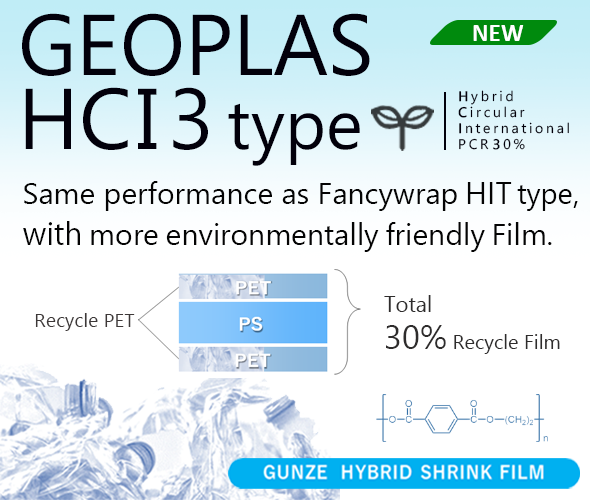
-
GEOPLAS HCI3 type is an environmentally friendly hybrid shrink film with a recycled material ratio of 30%.
It has both polystyrene and polyethylene terephthalate advantages such as excellent shrink appearance, perforation suitability, heat resistance, content resistance and stiffness.
GEOPLAS HCI3 type is widely used globally as shrink labels for PET bottled beverages, foods, cosmetics, home & personal care products and other products.
Shrinkage chart of GEOPLAS HCI3 type

Mass balance approach
The mass balancing approach is when a raw material with certain features (e.g., chemical recycled raw material) is mixed with a raw material that does not have certain features (e.g., petroleum-derived raw material) during processing and distribution from raw materials to products.
It distributes the raw material with specific features to a part of the product according to the input amount of the raw materials with the specific features.
The mass balance approach-based products require a third-party certification to avoid arbitrary decisions by companies.
By depolymerizing and monomerizing waste plastic-derived raw materials through chemical recycling, and by combining 100% recycling features according to the input amount during repolymerization, it becomes a “raw material which the recycling effect is combined.”

By 2030, we aim to provide 100% recycled film by establishing technologies and recycling schemes to break down and reuse plastic waste for the circular economy.

Gunze Plastics & Engineering of Vietnam Co., LTD.
-

No. 9 VSIP II-A Hoa Binh Road, Vietnam - Singapore Industrial Park II-A, Vinh Tan Ward, Ho Chi Minh City, Vietnam.
-

Tel: +84-0-27-4380-3808
-

Email: info@gunzeplastic.vn

